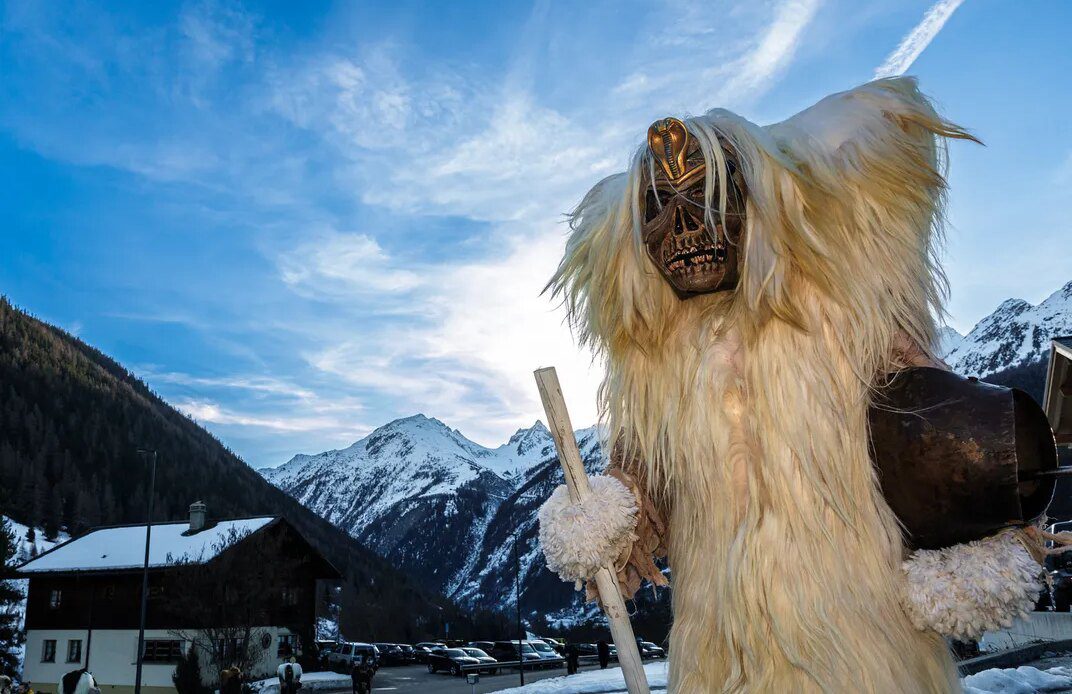As winter’s darkness descended on Blatten, one of four hamlets in Switzerland’s Lötschental Valley, I heard the flat, hollow sound of cowbells in the distance. It was not the languid ring of grazing heifers. It was frenetic. Intentional. The tschäggättä were on the move, bringing to life a 200-year-old tradition unique to this small 19-mile swath of the Alps.
It was Carnival, the festive period generally celebrated in February up until the night before Ash Wednesday, when Lent begins. The tschäggättä (pronounced chalk-a-taw) are villagers who roam the narrow streets of the valley, clanging bells and making mischief dressed as Sasquatch-like creatures. To protect their anonymity, they wear hand-carved pine masks with terrifying human faces. On their bodies is a combination of burlap and old clothes worn inside-out, paired with homemade shoulder cushions used to create an imposing silhouette. Layered on top are goatskin or sheepskin pelts secured at the waist by a wide leather belt from which a cowbell hangs.
A Lötschental Valley resident is dressed as a Tschägättä after the annual Carnival parade in the village of Wiler, in Valais, Switzerland.
Susan Portnoy
Today, any villager can take part, but historically, the fur-clad revelers were exclusively young, unmarried men who moved alone or in small groups during the day (save Sundays) during Carnival. Johann Gibsten, a conservative Catholic prior in the valley during the mid-19th century—an outsider with little enthusiasm for the area’s customs or traditions—recorded the earliest written reference to the tschäggättä for an 1868 church chronicle, which described their schoolboy antics. Appalled with what he saw, he banned the practice during his tenure sometime between 1864 and 1876. A translation of Gibsten’s entry appears in an exhibition at the Lötschentaler Museum in the valley’s village of Kippel, alongside more than 350 masks:
“During Carnival time, there was a terrible abuse of the so-called Tscheggette. As wild as one could dress; the face with a descriptive wooden mask, the head with horns, the body with furs, resembling animals,…
Click Here to Read the Full Original Article at Travel | smithsonianmag.com…
